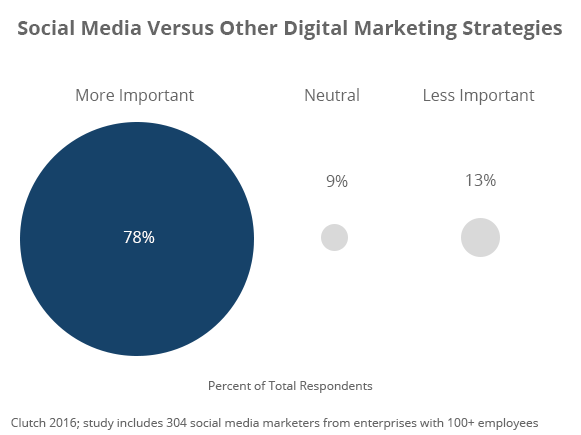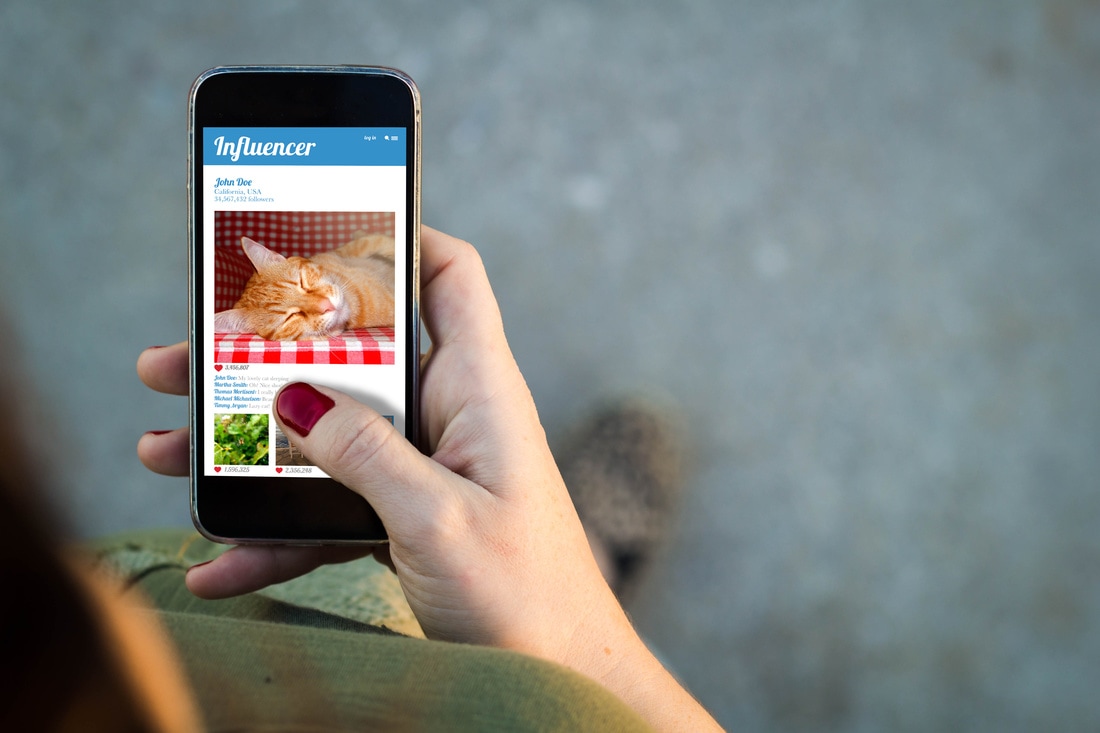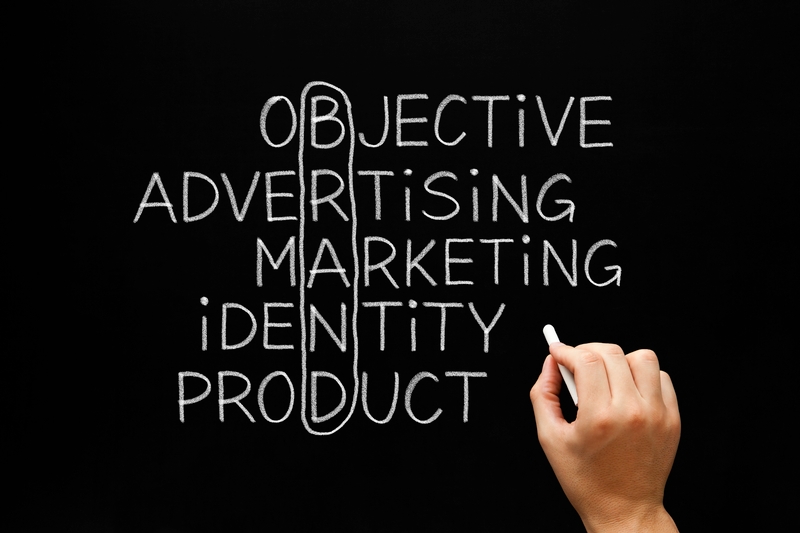|
Here at Look Media + PR, we have been predicting video will keep brands engaged with their consumers or users
We could fill a book with statistics about the growth of the medium. We’ll keep it brief here and tell you video is becoming quickest way to reach and engage, North American’s are the heaviest users of the Internet on earth. And the thing we do the most while we’re there is watch video. Add to that our client Facebook’s metric that people share nearly three times more video today than they did in 2015, and the implication for marketers is clear: Any organization or company who desires to grow its brand online must embrace video. That said, to how do you do it? We chatted with our in-house creators need to understand why video is so compelling, and how to create videos that compel. Why video is rising
How to make videos that ignite and gain traction? Even in a world of inexpensive gear and live streaming, creating an engaging video takes time, energy and budget. Once you’ve decided to create one, follow these rules to make it popular:
Whoever your audience is, and whatever you want to say to them, video is one of the best tools in the kit. Rounding out our robust suite of video services, Look Media has a new mobile video studio a one-stop-shop for filming and editing professional quality, quick-turnaround, budget-friendly video content, specifically designed for executives to address the camera. And best of all, we’ll come to you. It’s clear that video is soaring as a channel to build reputations and brands. And if you follow the simple rules above — with the help of video professionals — your videos can soar, too.
4 Comments
Social media influencers are all the rage right now, with marketers and businesses clamoring to utilize influencers to promote their products or services in order to reach a larger audience. However, what happens if you are a small brand? Many small brands are sensitive to marketing spends, and it can be difficult to get those big names to help support you – and that is where micro-influencers come in.
What are micro-influencers? Micro-influencers are influencers with a smaller audience - generally of under 100k, but over 10k followers. They can be anything from bloggers to just a regular person that's built a loyal following on social media.However, it is not just the number of followers that makes a micro-influencer. Just like with regular influencers, the number of engaged users is far more important. This is what shows that their audience is genuinely interested in this person, that they care about their point of view and opinion and that they listen to them. Why use influencers and who are they for? If you are thinking about using influencer marketing to promote your business, micro-influencers are a great place to start; particularly if you have a small business, or if you are just starting out. The key is, even if an influencer has a much smaller audience, that does not mean necessarily that micro-influencers will not be able to make a huge impact on your success. However, let's face it less is more! A smaller audience can sometimes even be a good thing - in many cases, the smaller the audience of an influencer, the more targeted and engaged they are, in large part because they’re following out of genuine interest (while a bigger influencer might get lots of new followers simply because they already have many followers). Micro-influencers also have more capacity to engage with their connections actively, while a huge influencer would never be able to interact with every member of their audience. What to look out for when researching micro-influencers. There are a few different things that you should keep an eye out for a few key points. As I mentioned earlier, it is important to look beyond the number of followers - in fact, in some cases, an influencer with 10,000 followers can hold a lot more power than one with 100,000 – so, don’t be blinded by numbers when researching influencers. Instead, focus more of your attention on how they are engaging with their audience and how their audience is engaging in return. Don’t just check their stats (i.e. how many likes they get on average), but take the time to look at the conversations they are having. The more there are, and the more genuine they are, the better. What is their niche? Another key element to look for is what they are posting on their social media profiles.Is it relevant to your business? Is it targeted at the same target audience your business is? When researching influencers, you need to examine their follower base. Do you two share the same target audience? This is where knowing your consumer is key in promoting your product or service. Hiring a beauty influencer to promote a product that maybe more healthcare driven will do nothing but drive your audience away with confused messaging. (Nothing will sink a promotion or a campaign then the wrong fit for your brand!) Where to find influencers? The first step in looking for micro-influencers is to take a look at your consumers and who is engaging on your social platforms? We have often reached out to those followers who interact with our client's brands to help promote if they are key influencers within the market we are seeking to promote. Often they are eager to promote a product that they already love. How do I measure engagement? Here are a few CRM tools that are not going to break the bank for even small businesses. 1) Agorapulse, Agrorapulse automatically ranks any influencers and even brand ambassadors (i.e. users who have shared and helped promote your content) to your list of fans and followers. 2) Buzzsumo. BuzzSumo enables you to search for influencers by using relevant keywords - but the best part is that you can filter them in various ways.If you only want influencers from certain locations, you can filter them by country, or even the city. You can also filter them by the type of influencer you are looking for, such as bloggers, companies, journalists, social influencers and even regular people. Bonus, you can sort them by relevancy, their website’s domain authority, their number of followers, as well as their average reply ratio to see how often they engage with their fans. 3) LaunchMentrics. LaunchMentrics enables a Publisher tool that is designed to track online interactions. You can configure it so that you receive email updates of the matches the tool finds online with the interaction you want, on the Internet, on blogs and social media. Takeaways.
Ping us or share below, we do want to know. Ping us or share below, we really do want to know.  Snapchat vs. Instagram who’s winning the Stories 2.0
When Instagram released Stories in August 2016, many rolled their eyes at the blatant copying of Snapchat. Since that time, however, Instagram has made Stories its own.On my personal feeds alone, more and more friends and family are switching from Snapchat to Instagram - and while I am slowly transitioning apps myself, I see plenty of opportunities for brands to do the same. The image-based platform has seen a significant evolution in the past year, with the addition of Stories, live-streaming and a feed algorithm to uncover the most relevant content. Moreover, for businesses specifically, Instagram has also grown, adding business-specific profiles, improved adoptions and, coming soon, shopping tags, which could be huge. So how have users responded to all this change, which many thought could be moving too far from the platform’s more simplistic, visual-focused roots? The app has grown at its fastest ever rate, now with 600 million monthly active users, 400 million of them logging on every day. Moreover, this week, Instagram has revealed some new stats on their ad business, announcing that the platform now has 8 million active business profiles, and a million monthly active advertisers. Here are a few musings about the platforms. Insights Instagram allows you to know who your followers are. It is possible that your brand is producing great Snapchat content, but it does not matter if nobody sees it. The barrier of entry for users to follow a brand on Snapchat is much higher than it is on Instagram. Instagram Stories already has over 150 million users, and 70% of Instagrammers follow a business, underlining the potential in this regard. Also, 60% of Instagram users have indicated that they learn about products and services via the app. Features cool options. It is true that Instagram has mimicked many of Snapchat’s storytelling features, but it has also added its own spin, with additional capabilities (my favorite is Boomerang). In addition to the popular looping video generator, Instagram allows brands and users to tag other profiles in a Story. This is a great feature if your brand works with influencers. Instagram also allows you to swipe up from a Story to load a website of your choice. Utilize this feature if you want to showcase a product, encourage orders, and more. Money Who doesn't love to find savings! While posting an Instagram Story to your brand’s page is free, the platform is also rolling out in-story ad units. These ads are not yet available to all businesses, but we’re anxiously awaiting the release - you can see samples of the feed - we stumbled on a cool Airbnb ad recently, or SPG are already getting transactional clicks. Instagram Stories ads are full-screen, which will ensure they generate maximum impact. They're currently being tested with 30+ clients around the world, including Capital One, Buick, Maybelline New York, Nike, Yoox, Netflix, and Qantas. You also get more bang for your buck with Instagram Stories compared to Snapchat. Instagram utilizes the same targeting capabilities as Facebook, so your brand can take advantage of the custom audiences that are already set up. Furthermore, the reporting tools will be similar to what your brand is familiar with on Facebook and Instagram. According to TechCrunch, “Instagram will also provide business accounts with analytics on the reach, impressions, replies and exits of their Stories. They will be able to check analytics on their Stories through the Insights button on their profiles.” Bottom line, know who your consumer or audience is. Many times if brands forget whom they are targeting, if you demographic is an LOHAS consumer, they may not be on Snapchat. One thing is for sure, the content is endless, and the ability to engage in visual storytelling has become more accessible to more brands and the more organic, the better.  So, you’ve hired a PR firm. Hopefully you will begin to foster benefits that come in the form of increased visibility, a boost in name recognition for you or your brand and improving your reputation. PR can do all those things by securing what is called earned media. A positive news story mentioning your company or receiving a great review of your product from a consumer group would fall into the “earned media” category. The benefit of earned media is that it tends to carry more weight with audiences because of the credibility of an independent source confirming your claims. As you probably know, your reputation is not who you are or who you say you are; it’s who others think you or the perception of via your consumers or your followers. This type of “earned media“ is defined as publicity generated by efforts outside of advertising, which is considered paid media, and it’s considered by most marketers to be more authentic. Not only does it convert at a higher rate than paid, or owned media, it also typically represents a higher lifetime value and has a lower cost per customer acquisition. Earned media PR is incredibly useful as long as the person speaking for the company is well-prepared and as communication + PR consultants we often find many of our clients are rookies when it comes to this type of media attention. Recently LOOK spoke with Shellie Bailey-Shah, former investigative reporter and current editor of KidTripster.com about how to best prepare for a media interview. Here are 4 tips to help you get comfortable for your close-up. 1. Gather the Facts and Do Your Research Preparing for a media interview can be similar to preparing for a new job opportunity - although, you’re already an expert. Reach out to the reporter or media outlet before the interview to clarify the topic of the story, and have a clear understanding of why you’re being interviewed. It’s essential to understand what the reporter is looking for and to anticipate possible questions you may be asked. "First, anticipate the questions that you will be asked, even the difficult and uncomfortable ones. Think through your response in advance and be ready with supporting evidence." Be sure that if you are representing your company that you research your own company! Review all recent press releases, events, and service announcements in order to be well-versed on the recent happenings in your industry as well. This allows you to be prepared to not only to comment on your own business, but on general trends in your industry. This brings value to the interviewer. Gather facts, statistics, and anecdotes which support the topic and make sure nothing is conflicting or unclear. We recommend that you have a print-out of key figures and/or statistics with cited sources that allow you to provide facts if needed. Be knowledgeable on the type of medium you’re providing an interview for:
Knowing a few key details can help you prepare properly for the interview. 2. Simplify Your Message for Clarity "Communicate your answers in terms that the average person can understand. Don't talk in circles, trying to mask your answer. You come off as being evasive and untrustworthy." We call that spinning! Spend time creating an outline of your key message, adding two or three supporting points you want to discuss. Keep the outline simple, and memorize highlights in order to remain on-topic and cover your entire intended message. When discussing important information, state the key message first and then provide background. Firmly establish your talking points, and don’t be afraid to repeat them in slightly varying ways. Use brief, clear sentences to express your point, learning to embrace the silence between questions. Reporters often use this awkward quiet to draw out unintended remarks from the person they are interviewing. Stay on track. Many individuals make the mistake of saying too much or going off on unrelated tangents which bury the more important information. Create powerful analogies, use precise statistics, and be prepared to provide the reporter with a strong, usable quote. Quotes provided by experts lend credibility to press stories, and you should assume that everything you say can be published or aired. Some interviewees get themselves into trouble by excessive joking, or off-colored comments prior to, or after the primary interview. (Remember that you could have a hot mic.) Nothing is “off-the-record” and you should only say as much as you’ve come prepared to discuss. 3. Practice and Review Practice makes perfect. Prepare for your interview by running through your talking points with a colleague. Hold a mock interview where you answer questions in rapid succession and consider recording it with a webcam. This will allow you to review the footage and examine your body language. You want to appear professional and friendly, make eye contact, and consider the inflection, articulation, and speed of your speech. "Be personable and relatable. I always tell interview subjects that we're simply having a conversation. That's how you should approach it. Unless you're on the hook for some misdeed, reporters aren't out to make you look made. Their objective is to communicate information as clearly as possible." 4. Never ever… "Finally, don't lie. Reporters interview people for a living; seasoned journalists can smell dishonesty from a mile away." Remember that the media is not an advertising agency where you control the story, and that their intention is usually to inform the public with a fair, balanced story. Be nice and thankful for being recognized enough by your industry to be interviewed. Successfully handling interview questions may mean a future invitation or follow-up interview. Thinking of a PR + Media review? Reach out, we at LOOK are here to support.[email protected] Promotions, email, events, and social media are marketing must-haves. But to take your 2017 plans to the next level, you also need to have your eye on some new trends. Which is exciting — there’s a ton going on right now.
VIDEO: advancements in video, augmented reality, and the Internet of Things are opening up a wide array of new marketing channels. And consumers’ increasing affinity with personalization and authenticity provide creative opportunities for your brand to differentiate itself and shine. Here are five marketing ideas for your small business to think about this year: #1. Host a live video event.Thanks to the ubiquity of mobile devices and faster Internet speeds, live streaming platforms like Facebook Live are gaining steam. And Instagram just got into the game as well, launching a live feature as part of Stories late last year. Streaming is a natural fit for media organizations (Buzzfeed uses it particularly well) and live events, but smart brands (like Benefit, Dunkin Donuts, and Chevrolet, to name a few) are also getting in on the action. The good news about live videos is that they don’t need high-quality production (read: expensive). In fact, that “let your hair down” look may be what’s so engaging about them in the first place. That means there are plenty of live streaming opportunities for even the smallest businesses — hosting things like tutorials, workshops, and behind-the-scenes tours. #2. Launch a video series.Videos drive sales. Wyzowl’s The State of Video Marketing 2016 survey found that 74 percent of users who watched an explainer video about a product or service then bought it. And 77 percent of consumers said they’ve been convinced to buy a product or service by watching a video. A no-brainer tactic here is to create an explainer video for each of your marquee products or services. But perhaps a more engaging strategy is to create an episodic video series. If you have a hair salon, for example, you could create a style tutorial every week. If you sell handmade or artisan products, you could launch a series on each artist. #3. Interweave purpose-driven marketing.Consumers care about the what, but increasingly, they also care about the why. As evidenced by the success of businesses like Everlane and Tom’s, customers connect with brands that position their larger mission front and center. So tap into the deeper purpose behind what you do. Then find opportunities to integrate that into all the components of your 2017 marketing strategy. #4. Launch a micro-influencer marketing campaign.“Influencer campaigns” have been buzzy for a while. But while they’ve typically been associated with celebrities or people with millions of followers, there’s evidence to suggest that going smaller and more niche might be even more effective. EXPERTS: A recent Experticity survey found that 82 percent of respondents were highly likely to follow a recommendation made by a micro-influencer. And though influencer marketing campaigns run through celebrities do yield conversions, activating 30 to 40 micro-influencers can result in even more business. So drill down into the niches of your industry to find possible experts or tastemakers to tap for campaigns. It’s not large-follower accounts you’re necessarily after, it’s sustained, active engagement. That’s likes and comments, yes, but also a sense that the person is involved with their audience and community. #5. Watch for opportunities in augmented reality and the Internet of Things.Two technologies are about to become part of our lives in a big way: augmented (and virtual) reality and the Internet of Things. INTERACTIVE: One only has to look to the wild success of Pokemon Go, an augmented reality game, to see the consumer appetite there. The New York Times just launched their own augmented reality app through their branded content arm, T Brand Studio. As for the Internet of Things (IoT), BI Intelligence expects that there will be approximately four IoT devices for every human being on the planet by 2020. (The Internet of Things refers to the connection of devices — things like household appliances, health monitors, even cars — to the Internet). What does that mean for marketing? New ways to reach customers. Watch these industries closely this year to spot potential areas of opportunity for your business. Good marketing is not just about deploying the tried-and-true tactics, it’s about trying some new ones. Push the envelope by experimenting with some of these new campaign ideas this year. Looking to review or refresh your strategy? Here’s our marketing plug, give us a ping at the follow: [email protected] HOW CONTENT MARKETING CAN GET YOUR BUSINESS AHEAD DURING THIS CRITICAL SHIFT IN MEDIA LANDSCAPE.
With the media landscape shifting rapidly—newsrooms shrinking, audiences more connected than ever before, and “fake news” everywhere—your content marketing and branding are extremely critical. The need to self-publish is becoming key to forming that connection to your consumer. Traditionally, organizations issued announcements, or opinions, and would be ‘picked-up’ (earned media). Whether your business is B2B (business-to-business) or B2C (business-to-consumer), self-publishing on multiple platforms will allow you to capture your target audience more easily and to continue to earn more trust in your brand. Traditional media is no longer the most trusted source of news and information around the world, according to the latest annual Edelman Trust Barometer. The study surveyed 6,000 “informed publics” aged 25 - 64 across 27 markets, finding that online search engines are now the most trusted source of general news. Online search has also widened its lead over newspapers and TV as the first source for general information—the source used by most to confirm and validate news. In light of these facts, content marketing—a tool so fundamental to increasing brand trust and product awareness—continues to be brushed aside by numerous brands and companies. So, how can you get your business ahead of the curve? Read on. YOUR WEBSITE IS NUMBER ONE For all businesses, the website is the most important step in closing a sale and driving engagement. Here are a few points to consider: Maximize the use of what you’ve already created is your website:
Increase the use of video and its’ life-cycle by:
As the traditional media landscape continues to shrink, digital content will become increasingly important to guarantee exposure for smaller deals, start-ups, and SMEs. Set up a communications system. Simultaneously post across all platforms, and don’t skip housing your content on your website, including:
Housing your content on your website allows you to share more in-depth information and move readers/potential clients through the purchasing channel. A trusted brand is earned through consistent and widespread information being communicated through every venue possible. START A BLOG IMMEDIATELY! A blog allows you to re-use your content, making it work harder for you. It’s an excellent way to showcase your news, ideas, expertise and knowledge. Launching a blog that covers relevant topics relating to your industry is one of the best ways to establish yourself as a thought leader. A thoughtful blog will make prospective and current clients confident that your services are supported by and built on industry expertise and knowledge. Maintaining an active blog adds credibility. Credibility increases trust—not only within your industry but with journalists as well. It is incredibly difficult to garner thought leadership engagement when no one has heard of you, and your website doesn’t validate your knowledge. Blogging is the key that will allow you to organically improve SEO lead generation. A boost in search engine ranking (if you’re using the right wording throughout your posts) means more potential clients will find you through search. Google processes 40,000 search queries every second, so it’s important that you rank or score high to earn visibility with your consumers. It’s personal. Blogging is a personal, down-to-earth method of keeping your current and prospective clients informed about your latest product or service offerings as well as your industry knowledge and expertise. What’s more, you company culture will also benefit. Journalists are typically only interested in the facts. With a blog, you’ll be able to tell your story—in your way and in your “voice.” It’s one more piece of the trusted brand puzzle. Placement. Securing a top-tier piece of media coverage is fantastic; however, as soon as a story has run in the media, it’s yesterday’s news. If it’s in print, it won’t be read the next day by someone who missed it, and if it’s online, you’re relying on someone having knowledge of your article/interview and searching for it. A blog on your website amplifies coverage by making it permanent and making it yours. You’re in control. With media relations, you’re at the mercy of the journalist, the editor, the sub-editor, the producer, or the photo editor when it comes to pulling together your story. You can’t control what ends up getting cut. However, with a blog, you are in complete control. You define the topic, you select the spokesperson, and you write what you want. But, keep in mind, you must be willing to stand by your comments if questioned and can back them with trusted facts. Further, when it comes to information, the same level of complexity and breadth of information simply cannot be matched through a media article. It doesn’t always have to be news. In the absence of company news flow, a blog is one of the best ways to keep your “conversation” with consumers going. Your senior employees have a wealth of knowledge and expertise, and through an active blog, they can build their personal brand through thought-leadership posts that focus on a topic with which they are subject matter experts. SEO benefits. A well-written blog post targeting popular search terms will attract visitors via search, which could result in new clients. You can be creative. It doesn’t have to be limited to the written word. You can develop vlogs (video blogs), create some cool infographics to support reports, podcasts, etc. The creative license is yours! Just remember—this is not advertising. You should not explicitly promote yourself or your brand. It’s a way to show the world the culture, leadership, innovation and other aspects of your team (or organization) that a 30-second spot does not. It’s one of the most impactful trust-building tools you have in your toolkit. We love a challenge and if you are interested in more insights or help in crafting your brands blog or vlogs, we are here to engage in the process. We love emails and comments too. [email protected] 78% of Enterprises View Social Media as More Important Than Other Digital Marketing Tactics1/13/2017  As more buyers turn to social media while conducting research, a new survey has discovered that it’s increasing in value to marketers and their organizations. The “Social Media Marketing Survey 2016” from Clutch has revealed that 78 percent of enterprises consider social media to be more critical for business success compared to other digital marketing strategies. Facebook (95 percent), Twitter (74 percent) and LinkedIn (66 percent) are the most commonly used social media platforms for B2B enterprises. Facebook is also widely considered as the most effective channel across enterprises, with 62 percent of respondents saying it yields the best results. LinkedIn (14 percent) and Twitter (7 percent) rank in the distant second and third slots. When it comes to the types of content that perform best on social media, 23 percent said that video content performs best, followed by images (22 percent).  Social Media “Stories”: Snapchat vs Instagram “The pros and cons of each storytelling feature!” Snapchat’s expiring, time-sensitive content has influenced a shift from hyper-curated (a la Instagram galleries) to a more laid-back method of photo sharing. To keep up with the changing mindset of social media users and a general growing trend of live-centric content online, Instagram recently introduced its own story feature. Its stark similarities to Snapchat’s ever-popular story feature initially confused users and sparked controversy in the social media community. “What do I post? Where do I post it?” asked various users. To this day, several brands and users seemed confused about this. In many cases, users have taken preference for a single platform for stories (think Team Snapchat Stories, Team Instagram Stories). Additionally, there’s been a trend of double-posting saved content from Instagram stories to Snapchat stories, using Snapchat’s “Memories” feature. So, which should you opt for, and why? The strengths and weaknesses of Instagram stories versus Snapchat stories, weighed out below:
However… with stories and the recent introduction of instant video within Facebook Messenger, it’s clear the powerhouse company has set its sights on Snapchat. It’s also worth noting Instagram’s strong, highly-visible partnership with Apple. Instagram is clearly on stage as the partner in photo sharing as Apple rolls out their much-hyped iOs update. Could this give Instagram an advantage over Snapchat in the future? We wouldn’t doubt it. Categories
|
The Look Brain Trust
We at Look tend to post on our musing's and insights. If you have a blog or an article, we would love for you to share. Archives
April 2017
Categories
All
|
Photo from John Loo









 RSS Feed
RSS Feed